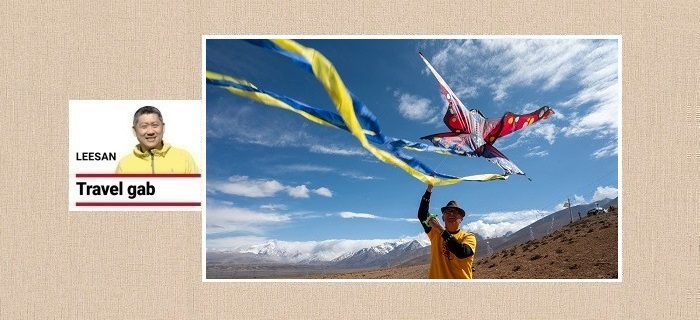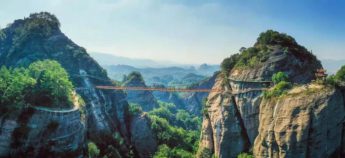Punishing journey, heavely sights – by leesan
Leesan and his group of intrepid travellers in Tibet make their way to Mount Kailash.
WE continued our 4WD Tibetan journey with a drive to Zhaxi- Zongxiang some 25km away from the Everest Base Camp, our previous stop. There, we enjoyed a bowl of Lanzhou mian (noodles) and chatted with the shop’s owner, Ma. He shared with us in Mandarin, “Zhaxizongxiang is perched at an altitude of 4,935m.
As the atmospheric oxygen con- centration here is extremely low, the water boils at only 85°C. You will need a pressure cooker if you want to cook the noodles here.” After lunch, we said goodbye to the Mount Everest Eco Park.
We realised that we’ve just achieved something spectacular – standing on the Roof Of The World and gazing at the world below us – and we were proud of it.

There are many sacred mountains in Tibet, but only Mount Kailash is recognised as the ‘centre of the universe’ by Tibetans, Mongolians, Indians and Nepalis, as well as Buddhists, Hindus and Jains. — Photos: Leesan
Our vehicles turned into National Highway G318 at the KM5200 mark, and then turned again into the G219 trunk road.
When we first started our epic Tibetan journey, we moved west#ward from Lhasa, but now, on the G219 we turned southwest, slowly pulling away from the
Nepalese border and into a region bordering India. Despite the sparse vehicular traffic along this stretch of the highway, we could still see some mid-sized buses ferrying pilgrims from India. We had no idea where these people were headed to, though.
After driving for almost two hours, we came across another extensive mountain range quite unlike the snow-capped Himalayas. Liu, one of our driver-guides, said, “That’s the 1,500km-long and 60km-to#100km-wide Gangdise Mountains located entirely within the borders of China with altitudes of 4,000m to 6,000m above sea level. Along with the Himalayas on our left, and Kunlun Mountains on the far right, it is one of the three parallel mountain ranges in Tibet.”
He added that our journey ahead will be even more exciting, as we start to move into the Gangdise. “From what we know, on the grassland above Gangdise lies the iconic Chengdu-to-Senge Zangbu section of Highway G317. This is the so-called ‘mystical realm of Tianshan Ali in Western Tibet’ and it encompasses the one-of-a-kind super high altitude mountain range highway, the G317,” he said.
The highway is perched at a staggering altitude of around 5,000m above sea level and we couldn’t wait to get there! Driving steadily towards thewest and then turning northward, we could feel the altitude gradually rising. When we reached an altitude of 5,097m, we felt a little short of breath, but fortunately we had brought along some large oxygen tanks in our vehicles.
Tom and I had to take turns using the oxygen tank. Dr Zhou, who travelled with us, advised, “Half an hour of oxygen per person helps ease the symptoms of altitude sickness.”
On the other hand, another traveller, Helena, appeared to be unaffected by the altitude, as she was breathing normally and could even cut some apples and prepare snacks for the rest of us.
Are women built to withstand altitude sickness much better than men? Almost all the seven ladies travelling with us were largely unaffected by the rising altitude, while the gentlemen required extra oxygen.
There were plenty of fun moments throughout the jour#ney. Chris always had his kite with him, and whenever our 4WDs stopped for a break, he would take the chance to fly his kite. I also joined in, but because of the altitude, I lost my balance and stumbled, injuring my seventh spine. My fun time was abruptly cut short. Our ultimate goal over the following two days was to be in the “centre of the universe, the stairway to Heaven”, a place so claimed in Buddhism, Hinduism, Jainism, and Tibetan Bon Buddhism. The Kangrinboqe or Mount Kailash, standing at 6,714m, is mentioned in ancient Indian Vedas and other literature and considered a transit point between the Earthly physical world and Heavenly spiritual realm. Before reaching there though, we continued our drive along the uninhabited G219. We could see white clouds hovering above the clear blue sky, and Tibetan antelopes occasionally hopping past us, at times sending our driver (and us) screaming in surprise.
On our right, the white-clad peaks of Gangdise faintly came into sight. The mountain is made up of neogene gritstones with steep dome-shaped pyramidal peaks, and it actually looks as if there is a stairway leading to the skies. Suddenly, the mountains were partially covered by the passing clouds, but Liu told us to be patient for a little while more, as there is an observatory less than 20km ahead of us. This is where we could catch a good glimpse of the majestic Mount Kailash. We arrived at Mount Kailash on the 15th day of the fourth lunar month, marking the annual Tibetan Prayer flags festival.
No wonder we could see so many pilgrims from India and Tibet flocking into Mount Kailash, considered to be the centre of the universe. It is said that the num- ber of visitors for this auspicious day could be as high as 5,000. This explains why there were so many police guards on patrol along the tiny local street.
And due to overwhelming demand for hotel rooms, most of the drivers had to put up the night inside their own vehicles.
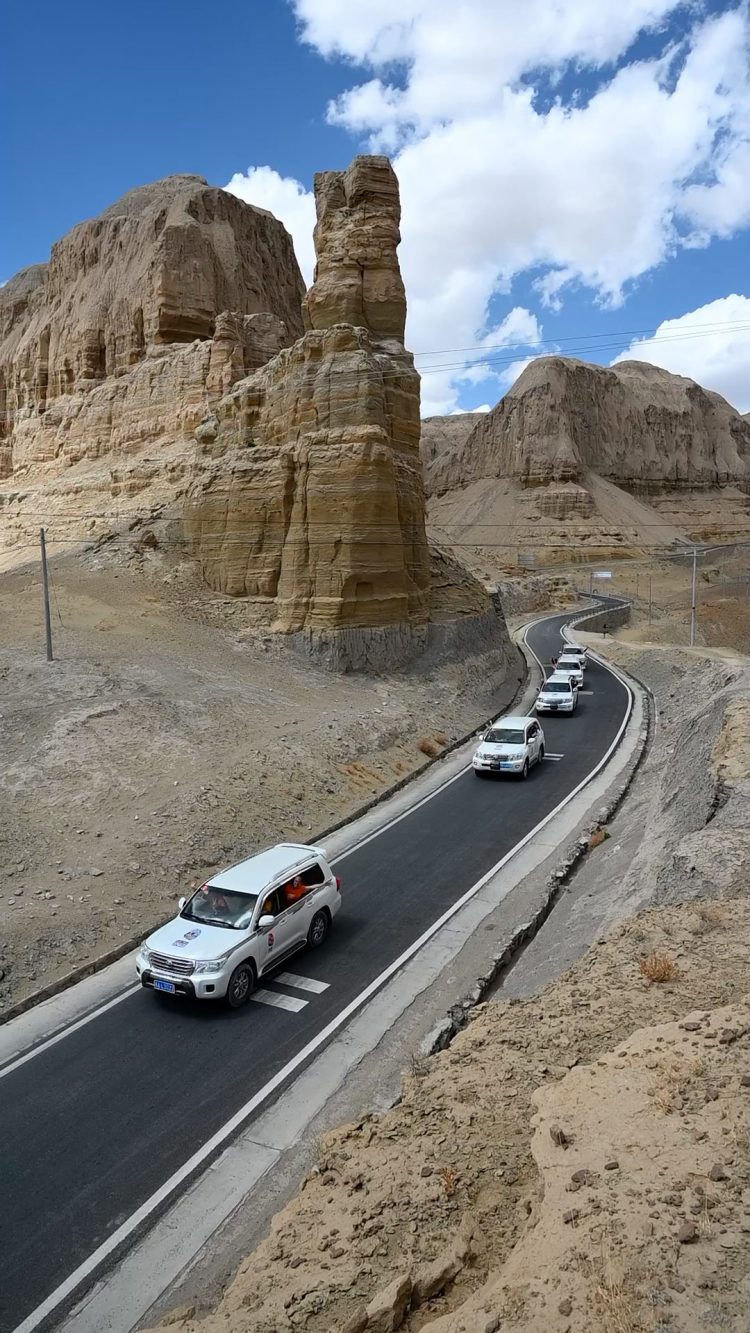
China’s national trunk road G219 has stunning landscapes, mountain peaks, lakes, deserts, and even icebergs.
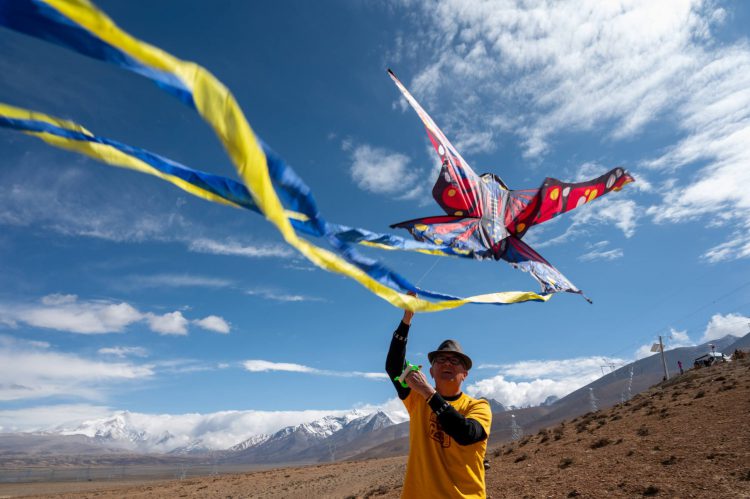
Every chance he got, Chris would take out his kite and fly it at an altitude of over 4,000m in western tibet. Fun!
Places around Mount Kailash are over 4,900m above sea level, and we could feel that the air was even thinner here, forcing us to seek help from Dr Zhou.
Due to the massive crowd, eco-friendly vehicle transport services to Mount Kailash had to be suspended. As a consequence, we had to walk our way there for 7km each way. This proved to be difficult for most of us as the oxy- gen concentration up there is extremely thin, while the UV radiation is at full blast. In the end, we had to make the painful decision to abort our original plan of joining the local festive celebration at the foothills of Mount Kailash. We were forced to change our travel plan due to health concerns.
Our tour guide Feng Jun suggested that we go back to KM3895 on G219, where the organisers have arranged a live telecast to allow devotees to take part in the ceremony together.
We did exactly this as we still wanted to see the celebration. We saw prayer flags printed with Buddhist scripture fluttering in the wind, while devotees were chanting, conveying good wishes to God, seeking His blessings. Tibetan prayer flags serve as a link between the mortals and Divinity, carrying with them the people’s wishes for a better tomorrow. We followed Feng Jun to make three turns around a stupa as we prayed for peace to the world and prosperity for all nations. Although this leg of the trip was more like “hell to the body and Heaven to the eyes”, we all took things in our stride, and tried to enjoy it as best as we could. We prepared ourselves for the next part of our journey – Gangdise and the uninhabited region of Ali. Come join us.
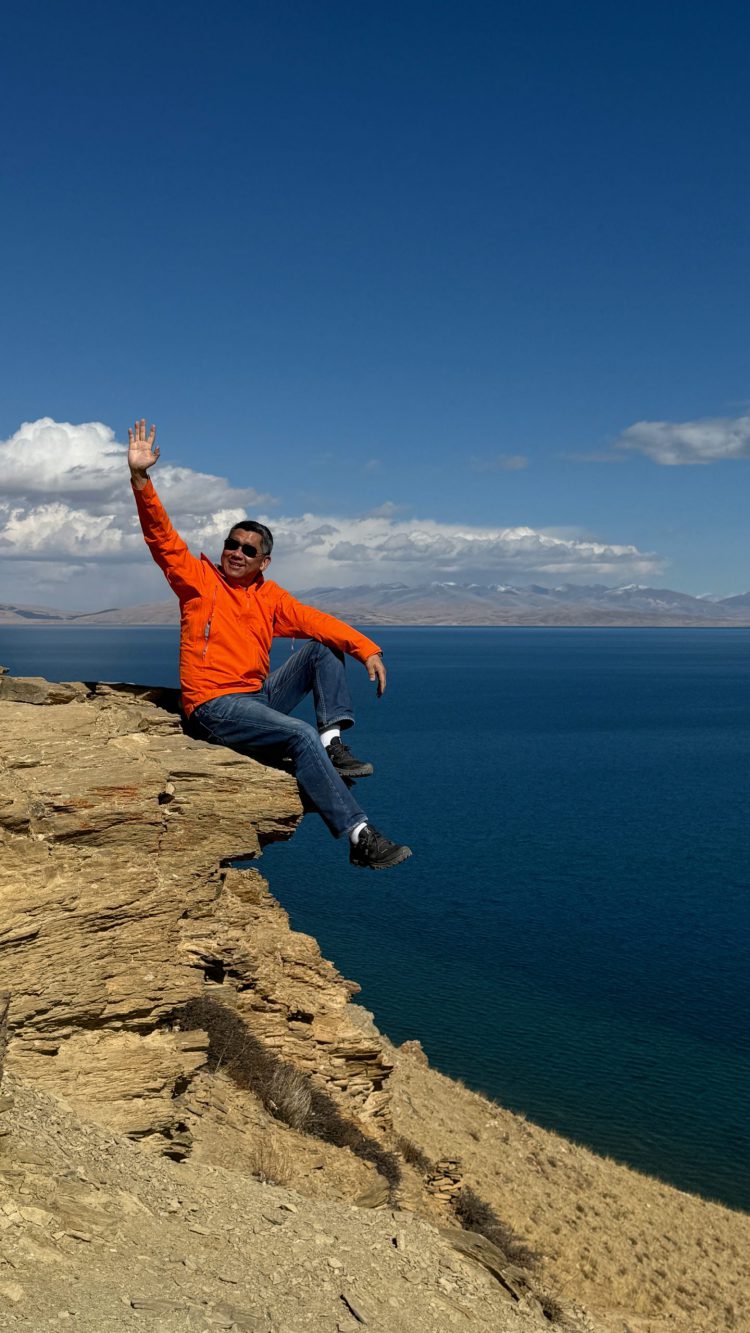
Tibetan Buddhist sacred lake-Lake Manasarovar at altitude 4588m. Tibet is the region with the most lakes in China, with a total 1,500 lakes of different sizes and scenery scattered among the mountains and plains.
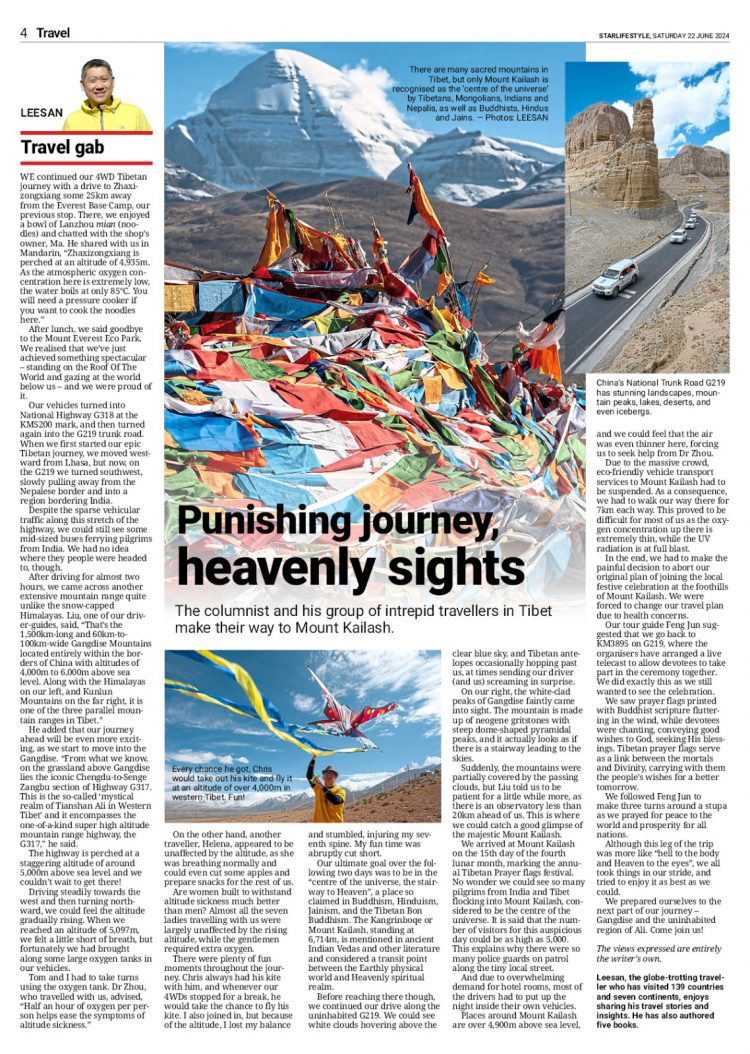
Published in The Star, 22 Jun 2024
全球超过80000家酒店,Apple101助您轻松订房,出行无忧,绝对优惠价。入住期间付款,多数客房可免费取消!
